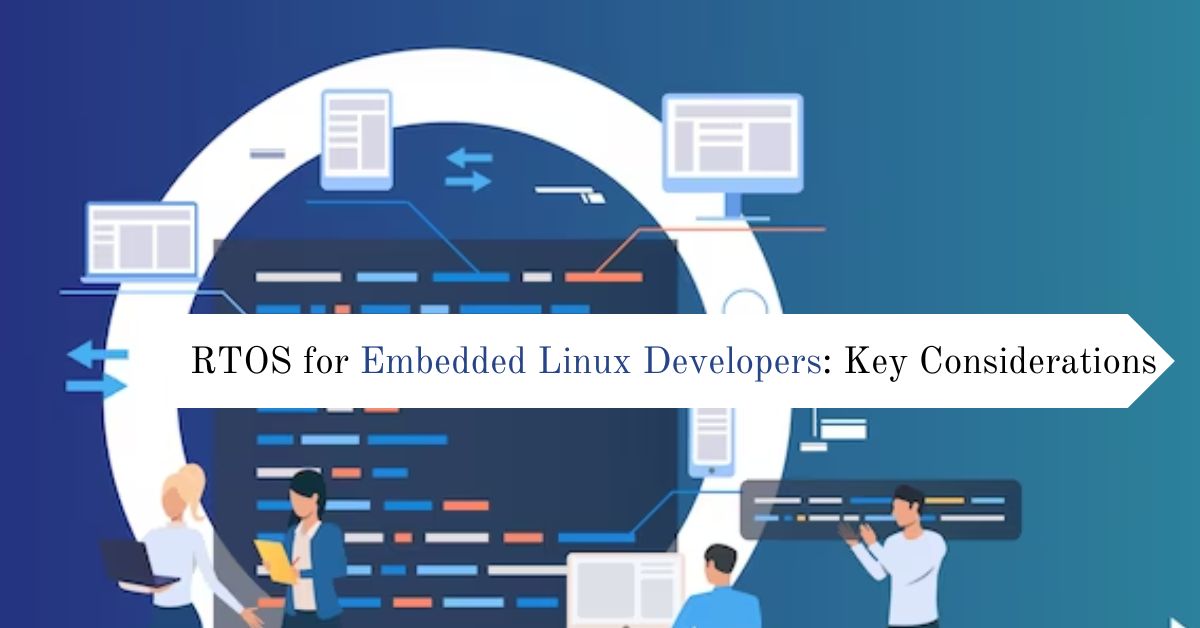RTOS for Embedded Linux Developers: Key Considerations

In the ever-evolving landscape of embedded systems, the choice between a Real-Time Operating System (RTOS) and a General-Purpose Operating System (GPOS) like Linux is a critical decision. Embedded Linux developers face the challenge of selecting the most suitable platform for their applications, balancing real-time requirements with the flexibility and robustness offered by Linux. Embedded Linux development services play a crucial role in this decision-making process, offering specialized expertise and support. This article explores key considerations for embedded Linux developers when contemplating the integration of an RTOS into their projects.
Understanding the Role of RTOS in Embedded Systems
RTOS and Linux serve distinct purposes in the realm of embedded systems. RTOS is designed for deterministic, time-sensitive applications, where tasks must be executed within precise time constraints. On the other hand, Linux provides a comprehensive, feature-rich environment suitable for applications that don’t have stringent real-time requirements.
Application Requirements: Defining Real-Time Constraints
The first step in choosing between an RTOS and Linux is a thorough understanding of the application’s requirements. If your embedded system demands predictable and deterministic responses to events, such as in automotive control systems or medical devices, an RTOS might be essential. On the contrary, applications like multimedia and general-purpose computing may favor the flexibility and extensive libraries provided by Linux.
Performance Considerations: Balancing Real-Time and Throughput
RTOS excels in meeting real-time requirements, offering low latency and deterministic behavior. However, this comes at the cost of reduced throughput compared to Linux. Developers must carefully assess the trade-off between real-time performance and overall system throughput to ensure the chosen operating system aligns with the application’s demands.
Resource Utilization: Tailoring to System Constraints
Embedded systems often operate under resource constraints, such as limited memory and processing power. RTOS is typically more lightweight than Linux, making it suitable for resource-constrained environments. Developers should evaluate the resource requirements of both RTOS and Linux to ensure compatibility with the hardware limitations of the embedded system.
Peripheral and Device Support: Integration Challenges
Linux has extensive driver support for various peripherals and devices, simplifying integration efforts for developers. RTOS, while capable, may require more customized drivers and pose integration challenges for certain hardware components. The availability of drivers and ease of integration should be a crucial consideration when choosing the operating system.
Development Environment: Tools and Ecosystem
The development environment plays a crucial role in the efficiency and ease of embedded system development. Linux boasts a rich ecosystem of development tools, libraries, and community support. RTOS environments may offer specialized tools but may lack the comprehensive ecosystem found in the Linux community. Developers should weigh the advantages of each environment based on their familiarity, project complexity, and available resources.Additionally, it’s essential to consider conflict mineral compliance when selecting a development environment to align with ethical and regulatory standards.
Security Considerations: Evaluating Vulnerabilities
Security is a paramount concern in embedded systems, especially with the increasing connectivity of devices. Linux benefits from a robust security model with continuous updates and patches. RTOS, while inherently more secure due to its minimalistic design, may lack the comprehensive security features of Linux. Developers should carefully evaluate the security requirements of their application and choose an operating system accordingly.
Cost and Licensing: Budgeting for Embedded Solutions
Cost considerations, including licensing fees and development expenses, play a pivotal role in the decision-making process. While many RTOS options are open-source, some commercial solutions may incur licensing costs. Linux, being open-source, is a cost-effective choice in terms of licensing but may entail higher development costs due to its complexity. Developers should evaluate the overall cost implications over the project lifecycle.
Ease of Maintenance: Long-Term Viability
The long-term maintenance and sustainability of an embedded system are critical factors. Linux benefits from an extensive community that ensures continuous development and support. RTOS solutions may vary in community size and long-term support, influencing the ease of maintenance. Developers should assess the long-term viability of the chosen operating system to ensure ongoing support and updates.
Conclusion: Striking the Right Balance
In the realm of embedded systems, the choice between RTOS and Linux is not one-size-fits-all. It demands a nuanced understanding of the application’s requirements, system constraints, and development considerations. Striking the right balance between real-time performance and overall system efficiency is the key to a successful integration. Embedded Linux developers must carefully evaluate each consideration, ensuring that the chosen operating system aligns seamlessly with the unique demands of their project. Ultimately, the decision rests on finding the optimal trade-offs that best serve the goals of the embedded system in both the short and long term. Leveraging embedded software development services can provide specialized expertise and support throughout this decision-making process, ensuring efficient and tailored solutions for embedded projects.Additionally, collaboration with CAD drawing services can enhance the integration process by ensuring seamless alignment between software and hardware components, facilitating a holistic approach to embedded system development.









